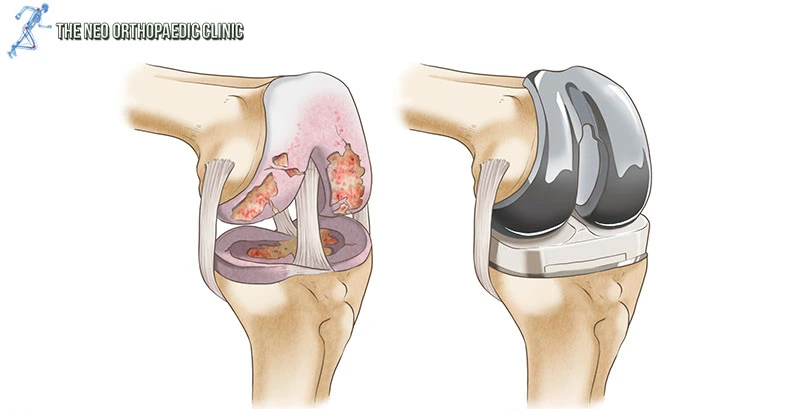A total knee replacement, also known as total knee arthroplasty, is a surgical procedure that involves removing damaged knee joints and replacing them with artificial ones. The goal of the procedure is to relieve pain and improve the function of the knee joint.
The knee joint is made up of three bones: the thighbone (femur), shinbone (tibia), and kneecap (patella). In a total knee replacement, the damaged surfaces of these bones are removed and replaced with artificial parts, usually made of metal and plastic.
The procedure is usually performed under general anesthesia and takes about 1-2 hours to complete. After the surgery, patients will typically spend several days in the hospital for recovery and rehabilitation.
Indications for a total knee replacement typically include severe knee pain and stiffness, knee deformities, and loss of mobility and function in the knee joint. These symptoms can be caused by a variety of conditions, including osteoarthritis, rheumatoid arthritis, and knee injuries.
In most cases, a total knee replacement is a highly successful procedure that can relieve pain, improve mobility, and enhance the quality of life for patients. However, as with any surgical procedure, there are potential risks and complications associated with total knee replacement. These can include infection, blood clots, and knee joint stiffness.
Patients can minimize the risks associated with total knee replacement by carefully following their doctor's instructions and engaging in physical therapy and rehabilitation after the surgery. This will help to ensure a successful recovery and the best possible outcome.
If you are suffering from knee pain and loss of mobility, a total knee replacement may be an option for you. Your doctor can evaluate your condition and determine whether this procedure is the right choice for your needs. With advances in technology and surgical techniques, total knee replacements are becoming more effective and easier to recover from. Don't let knee pain hold you back – talk to your doctor about the possibility of a total knee replacement today.



